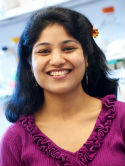Double-strand DNA break repair in mycobacteria Book Section
| Authors: | Gupta, R.; Glickman, M. S. |
| Editor: | De Bruijn, F. J. |
| Article/Chapter Title: | Double-strand DNA break repair in mycobacteria |
| Abstract: | Discontinuity of both strands of the chromosome is a lethal event in all living organisms as it compromises chromosome replication. As such, a diversity of DNA repair systems has evolved to repair double-strand DNA breaks (DSBs). In part, this diversity of DSB repair systems has evolved to repair breaks that arise in diverse physiologic circumstances or sequence contexts, including cellular states of nonreplication or breaks that arise between repeats. Mycobacteria elaborate a set of three genetically distinct DNA repair pathways, homologous recombination (HR), nonhomologous end joining (NHEJ), and single-strand annealing (SSA). As such, mycobacterial DSB repair diverges substantially from the standard model of prokaryotic DSB repair and represents an attractive new model system. In addition, the presence of the DSB repair system in mycobacteria that can repair DSBs in nonreplicating cells (NHEJ) or when DSBs arise between repeats (SSA) has clear potential relevance to M. tuberculosis pathogenesis, although the exact role of these systems in M. tuberculosis pathogenesis is still being elucidated. In this chapter, we will review the genetics of mycobacterial DSB repair systems, focusing on recent insights. © 2016 John Wiley & Sons, Inc. All rights reserved. |
| Keywords: | dna damage; dsb repair; mycobacteria |
| Book Title: | Stress and Environmental Regulation of Gene Expression and Adaptation in Bacteria |
| Volume: | 1 |
| ISBN: | 9781119004882 |
| Publisher: | Wiley Blackwell |
| Publication Place: | Hoboken, NJ |
| Date Published: | 2016-01-01 |
| Start Page: | 577 |
| End Page: | 585 |
| Language: | English |
| DOI: | 10.1002/9781119004813.ch55 |
| PROVIDER: | scopus |
| DOI/URL: | |
| Notes: | Book Chapter: 9.4 -- Export Date: 2 June 2017 -- Source: Scopus |
Altmetric
Citation Impact
BMJ Impact Analytics
Related MSK Work




